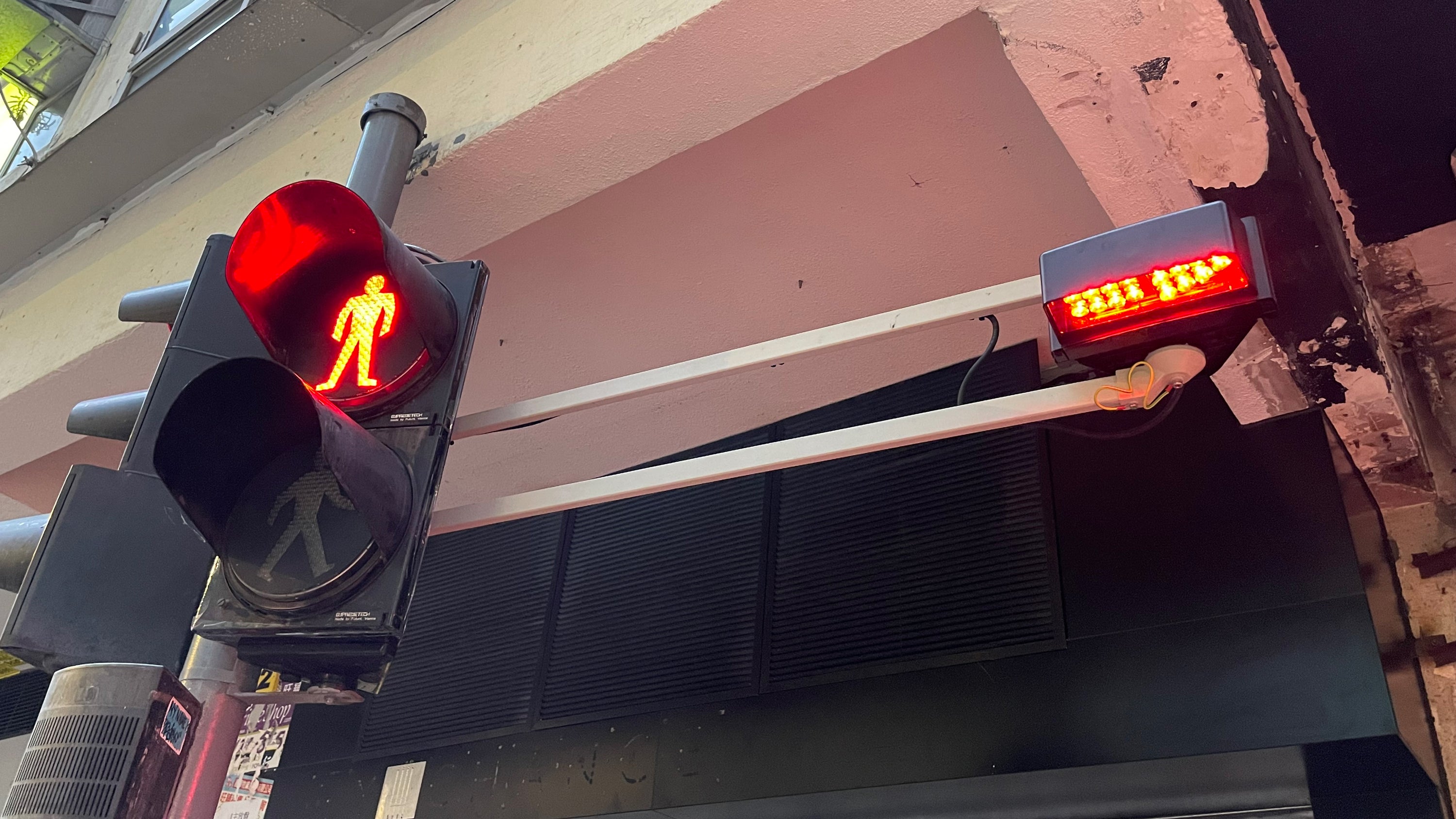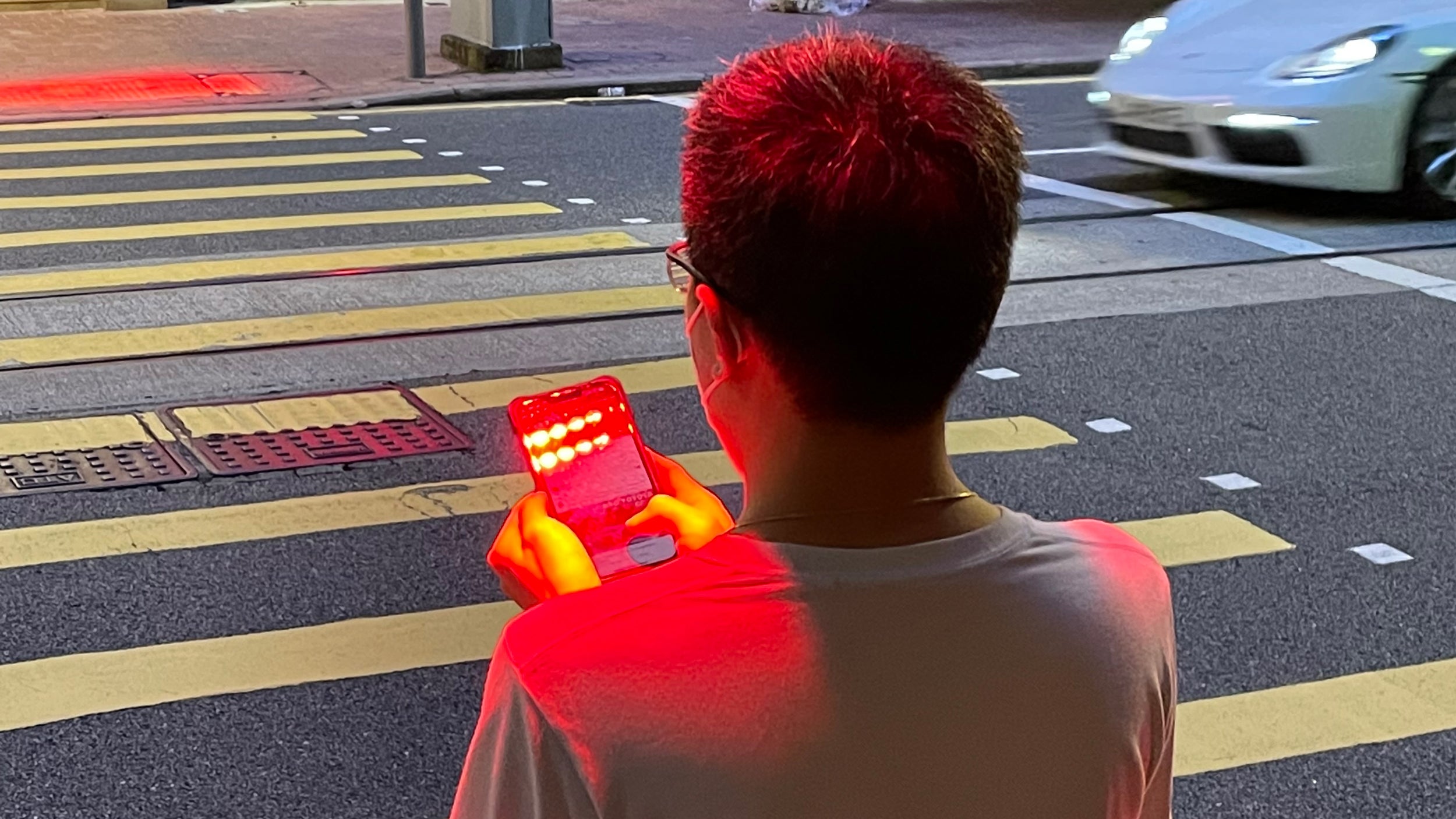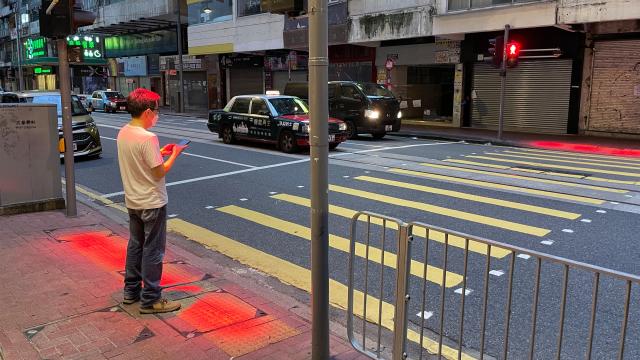As technology evolves, so does society, shaping itself around those new advancements. The automobile changed the layout of cities (maybe for the worse) and television changed household dynamics, but the smartphone promises to shake things up even more. In Hong Kong, in order to stop distracted phone users from stepping out into dangerous traffic, the city is experimenting with redesigned traffic lights.
The problem facing Hong Kong, and presumably every city around the world with a smartphone-carrying population, is how much of a distraction these devices can be. Even those who choose to keep their devices in a bag or pocket when they step outside can’t escape the endless barrage of notifications, which still sneak through thanks to wireless headphones and connected smartwatches. It’s a non-stop distraction, deliberately engineered to be that way, and it’s taking people’s focus away from more important things: like heeding traffic lights and crossing signals.

As part of a six-month trial at four different busy intersections in Hong Kong, the city has installed traffic light upgrades in the form of LED lamps that project a bright red light down onto the curb, on either side of a crosswalk, when the don’t walk signal is illuminated. Distracted pedestrians staring down at their smartphones, who may not notice they’re heading into the street, will be bathed in red light, as will the screen they’re staring at.

The hope is that the bright red light will be a red flag for pedestrians and a reminder to pay attention to a potential upcoming hazard. At first, the visual warnings will be hard to ignore, but one of the concerns over this approach is that humans are very good at eventually tuning out and ignoring certain stimuli. The audible tones used at many street crossings to assist the visually impaired have more or less disappeared into the background noise of a busy city for those who don’t depend on them, and over time these red warning lights may be as easy to tune out and ignore as the sounds of vehicles rushing by have become.
The solution also only provides additional warnings at crosswalks, specifically. It’s all but useless to a distracted pedestrian stepping out and jaywalking into the middle of a busy street. Despite its limitations, it’s going to be a while before smartphones are completely replaced by devices such as augmented reality displays that make it easier for users to keep their eyes on their surroundings. Autonomous cars that are better at spotting and reacting to hazards like pedestrians are also going to take a while longer to become commonplace, so any safety improvement is a welcome one.
